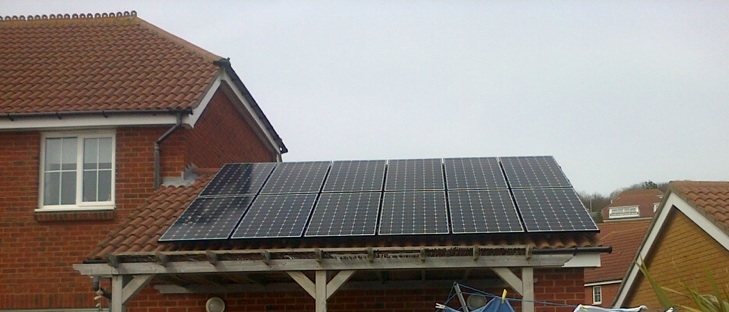
What are Solar PV Inverters?
Solar PV panels produce electricity from sunlight, and with over 500,000 systems now installed on people’s roofs in the UK, they have never been more popular.
The average solar PV system in the UK is 3.5kW, which with an average panel being 250w mean it will consist of 14 panels (find more solar PV tips here).
The electricity produced by solar PV panels is in the form direct current (DC). In the UK, the electricity that we use on the whole is in the form of alternating current (AC), and so before we can use the electricity produced from the solar PV panels, we need to convert it into AC – an inverter carries out this conversion.
String Inverters
Traditionally, individual solar PV panels are installed in series that lead to one string inverter. These string inverters effectively treat all the different panels as one giant panel.
There is one big issue with these string inverters. If there is a problem with one of the panels (for example a tree causing shading), all the other panels will also suffer an equivalent output loss. The panels will operate at the output of the worst performing solar panel.
You may think this might put solar PV installers from using them, however they are still by far the most popular setup mainly because they are cheaper to install and also they are easier to replace, since you just replace the one unit.
Micro Inverters
Micro inverters are attached to each individual panel, which allows the panels to operate independently from one another.
This gives them a huge advantage where different solar PV panels in your solar PV array may produce different outputs for whatever reason, since this will not impact all the rest of the panels.
For example, imagine a chimney breast situated on a roof of a mid-terrace house, this may cast a shadow for a couple of hours each afternoon. In a system with a string inverter, this would massively reduce daily output from the solar system. With micro inverters, the shadow would obviously impact the output of one panel, but this would not impact the other panels.
For this reason, it is estimated that for micro inverters can increase output from solar systems by up to 20%. Since you get paid for each kWh of electricity produced, any way you can maximise output should be encouraged!
Other differences between Micro inverters and string inverters
Inverter Lifespan
Most string inverters will only come with a 5 year warranty and even the most optimistic solar installers will admit that string inverters will need to be replaced at least once over the life-time of the solar panels.
In contrast micro inverters will last far longer; some manufacturers offer a 25 year warranty for their products. The reason for this is that string inverters need to deal with kilowatts of power and high input DC voltages, so they need high power transistors and electrolytic capacitors – these components unfortunately just don’t last as long. Micro inverters only need to deal with 250w of power (the size of a panel) and the DC voltage is far lower so only require thin film capacitors – eliminating the need for large transformers and electrolytic capacitors.
Complexity of install
With micro inverters, you need to install one unit for each individual solar panel – this is obviously more time consuming to do.
The benefit is that micro inverters tend to be easier to fix, typically because there is a single point of failure in the inverter, but the larger inverters can be far harder to fix because they are more complicated bits of kit.
Cost
For a 3.5kW solar PV system, 14 micro inverters would be required (1 for each panel). With each unit cost approximately £200, you are looking at a cost of approximately £2,800.
A string inverter for a 3.5kW system should only cost £1,500, which is far cheaper; this will mean that the initial install cost of a solar system with a string inverter will be cheaper.
Remember though that these string inverters won’t last nearly as long – maybe 10 years tops, while a micro inverter might last as long as 20 – 25 years.
Safety
When the sun is shining, solar panel systems produce a lot of electricity – this means high voltages, especially when you are dealing with string inverters. These can cause arc faults in some cases where cabling running from panels are unplugged or vermin chews through cables. Arc faults are dangerous because they don’t normally trip the circuit breaker – which means that heat can build up potentially causing fire.
Micro inverters, running at lower voltages don’t suffer from these problems, although it is worth mentioning that for both types of inverter – a problem like this would be extremely unusual. It is just highlighting the point of operating a system with high voltages!
So are micro inverters worth it?
Is it worth the extra upfront expense of installing micro inverters? It really depends on whether your system is likely to suffer any shading. If this is the case, then we would definitely recommend micro inverters. The fact is your system will produce more electricity with these installed, which not only produces higher financial returns via the feed-in tariff but also gives you more free electricity to use in the home.
Since the micro inverters last longer and most manufacturers offer far longer warranties, we would where possible advise people to consider getting these installed!
UPDATE: The Feed-In Tariff is now closed for new applications. To find out about the new scheme designed to replace it, click here.
Think we missed something? Do you have a different opinion?
Comment below to get your voice heard…
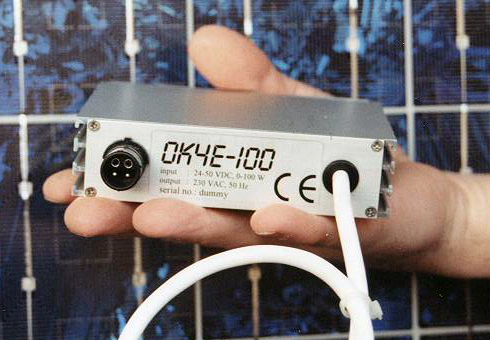



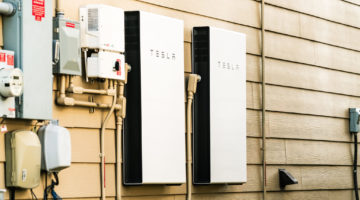

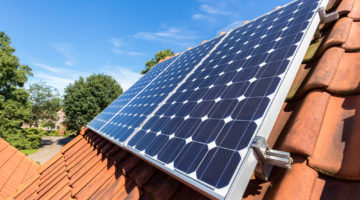
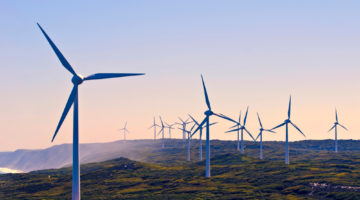





Hmmm!
If we say that the Warranty period is equivalent to the MTBF (mean time before failure) {I know that this is questionable, but there should be some such relationship] then the proper way to look at it would be ask how long before any one of the 14 micro-inverters fails as compared with how long before the single “string-inverter” fails.
Working in years, the way to do this is to take the inverse of the 14 additions of the inverse of the single micro-inverter Warranty period (25 years). The result of this is an expected failure roughly once every year and three-quarters.
So, one would incur the cost of erecting scaffold to access the roof-mounted micro-inverter (plus a micro-inverter replacement) once every year and three-quarters as opposed to the cost of a “string-inverter” (in the loft) once every 5 years.
Thus:-
Cost Of Scaffold – say £500?
Cost of Technician – say £200?
Cost Of “micro-I” – say £75?
Equals ~ £775
Times 25/1.75 =~ £11k for a PV system with a 25 year life.
OR
Cost Of Technician – say£200?
Cost Of “string-I” – say £1500?
Equals ~ £1700
Times 25/5 = £8.5k
So, it rather looks as if the “string inverter” wins by a considerable margin.
However, you could say that this additional cost is offset by the additional system performance claimed to be achieved by the “micro-I”; but this is only reliably calculable for cases of known shading which, for most roof-mounted systems, is totally absent.
You could say that the ability to know which PV panel has failed (they too will have an MTBF) is a benefit too; it will save some technician time in executing diagnostics up on the roof. If you apply the same principle wrt Warranty period equals the MTBF then, for 25 years per panel in a 14 panel system, you get the same (rather shocking) expectation that a panel will fail about every 1.75 years.
Now I have a system of 13 panels consisting of two separate sub-systems (one pointing SE and one pointing SW), each with its own “string-I”. It is now about 4.75 years old and thus far has suffered zero failures. This either means that I am very lucky or that the proposition that the Warranty period is the same as the MTBF is false. If I was a manufacturer I think that I would set the Warranty period well inside the calculated MTBF – let’s hope so.
Manufacturers are extremely secretive about MTBF (they always know what it is but NEVER NEVER release it to the public for fear of giving the public a concrete method of comparing products); this applies to all physical things – inverters, cell-phones, fridges, air to air heat pumps, cars, houses, bridges, aircraft, everything! Just think, you might actually be in a position to choose the more reliable aircraft for your flight to Miami if they released this known information.
£200 for an engineer ? :DDD
Surely one should multiply the probabilities of one inverter not failing in a year, rather than adding them? But this is only valid if failures are random, like radioactive decay. We need to know the pattern of failure.
For example, if I have two inverters and one fails after a year and the other after 49 years, that’s an MTBF of 25 years. If they both fail after 25 years, ditto. But these two possibilities have different implications for the cost of replacement. It might be best to claim for any early failures under warranty and then plan to replace them all, saving on scaffolding and labour, once two or three have failed outside the warranty period..
I have string system if a micro fails wouldn’t you just replace all at same time?
However if the 14 microinverters are guaranteed for 25 years, you do not incur any cost.
Am I missing something?
Could the micro inverters be located internally thus saving the scaffolding costs which are the dominant cost item?
Mounting them anywhere except at the panel defeats part of the purpose. Mounting farther away would require heavier gauge wire for panel to inverter and that is a very prohibitive cost. When you mount to the panel, you use common house wire from inverter to your electrical panel.
I have no shading at any time of yr have 12 285w panels 3.420kwhr system.
Few degrees off south facing 10yr warranty on my string inverter my panels have a + 0-2% rating on capacity.
Did I do the right thing on not going micro?
Hi Paul,
I would say so to be honest. I think it is the shading thing that most people don’t consider as this has huge implications on the output of the solar panels. A chimney for example casting a shadow over a single solar panel in a string can reduce output massively.
Micro inverters also make sense if your panels are facing in different directions. We have panels facing east, south and west and although you can have three strings to an inverter designed to handle three strings it becomes more complex and expensive
Do you know how much extra it cost for you for this set up over getting the 3 string inverters?
has anyone any experience in applying the microinverter installation to charging an electric auto? I wish to charge a bmwi3 using 48volt modules at 220 volts ac, without batteries nor a string inverter. I am independent of the grid, the pv size for the auto charging is about 1.5 kw.
Yes, one query. We have three rows of 5 panels. During March, April & May we ger shading from our chimney for approx two hours a day on two end panels of the bottom row – so knocking out that row for a few hours for those three months. Therefore, is it possible to fit micro inverters on just the panels affected leaving the remainder on the string inverter. Costs much lower and performance improved – or am I missing something?